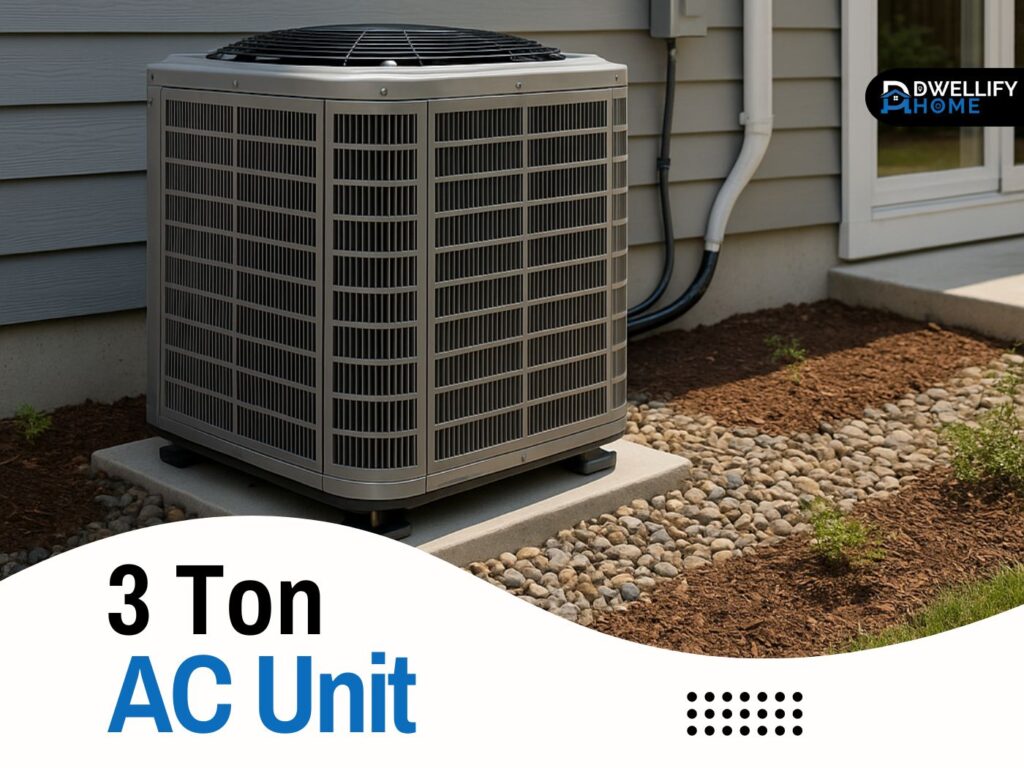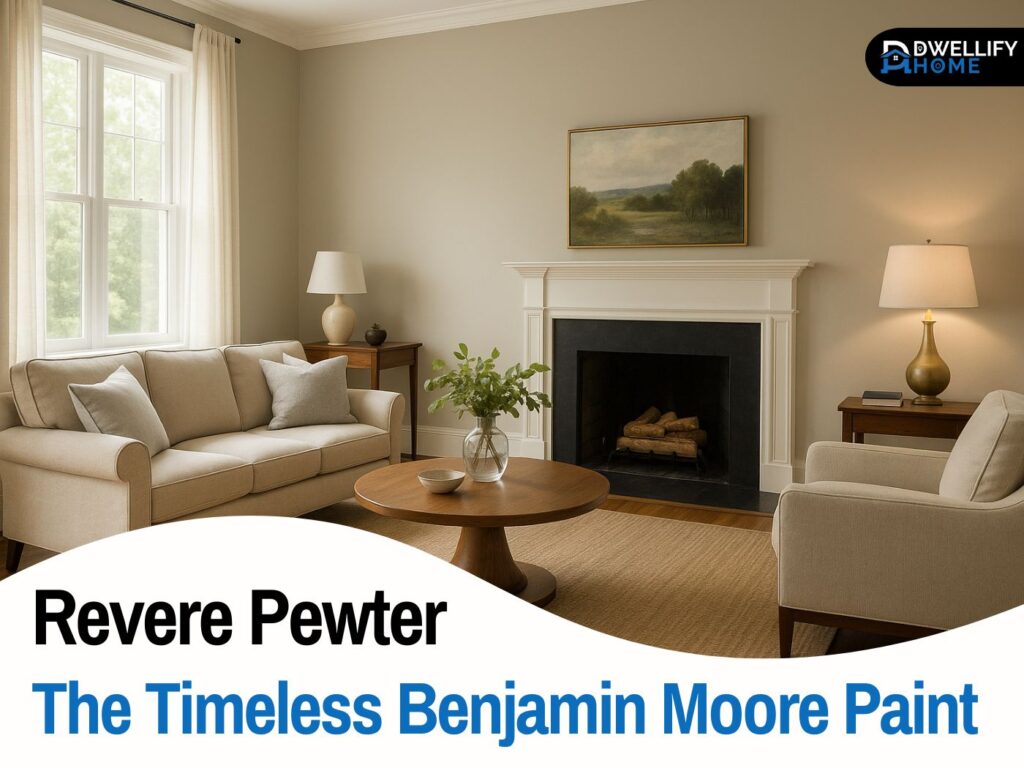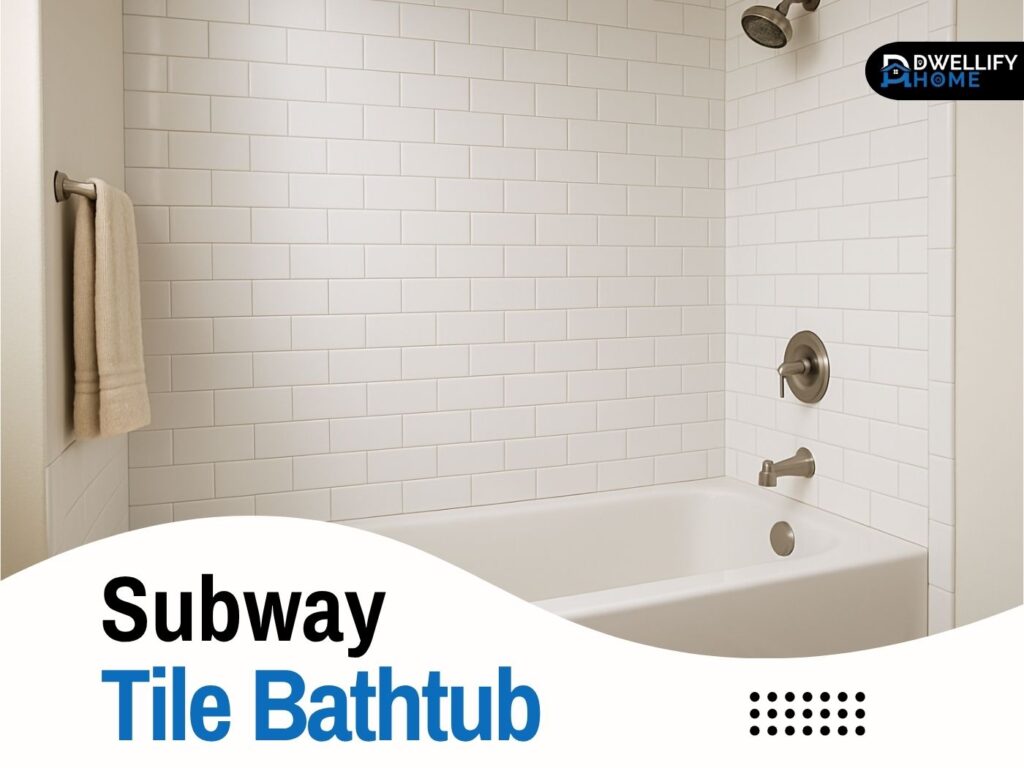You’ve probably heard people say things like, “You’ll need a 3 ton AC unit for your house.” But here’s the thing — most homeowners aren’t exactly sure what that means. Is it about size, weight, or power? And more importantly, is it the right fit for your home?
Let’s sit down and talk this through like friends over coffee. I’ve been installing and repairing air conditioners for years, and I can tell you there’s a lot more to choosing the right system than just grabbing a “3 ton” label from the store. This guide will walk you through what a 3 ton AC really is, how much area it cools, what it costs, and which models are worth your money.
Snippet-Ready Definition:
A 3 ton AC unit delivers 36,000 BTUs of cooling per hour, ideal for homes between 1,500–2,000 square feet. It’s a balanced option for comfort, efficiency, and energy savings.
Mission Statement
At Dwellify Home, our mission is to help homeowners make smarter, more confident decisions about their living spaces. We believe comfort starts with knowledge — and we’re here to simplify complex topics like air conditioning, energy efficiency, and home improvement so you can enjoy a safer, smarter, and cooler home.
What Is a 3 Ton AC Unit?
Let’s clear this up first — “ton” in air conditioning doesn’t mean the weight of the unit. It’s about cooling capacity. One ton equals 12,000 BTUs (British Thermal Units) per hour. So, a 3 ton AC unit produces 36,000 BTUs per hour — that’s the amount of heat it removes from your home every hour.
Think of it this way: if your living space gets hot during summer, that number tells you how powerful your AC needs to be to keep things cool and comfortable. Too small, and it’ll struggle to cool your home. Too big, and it’ll turn on and off constantly, wasting energy.
A 3 ton AC unit is one of the most popular sizes for mid-sized homes because it balances efficiency and coverage. Most homes between 1,500 to 2,000 square feet fall right in this sweet spot.
How Much Area Can a 3 Ton AC Unit Cool?
Here’s where things get interesting. A 3 ton AC unit doesn’t cool every 2,000-square-foot home the same way. Why? Because other factors — like insulation, sunlight, and ceiling height — matter just as much as square footage.
Here’s a quick guide based on real-world experience:
- In hot, humid climates (like Florida or Texas), a 3 ton AC comfortably cools around 1,300–1,500 sq. ft.
- In moderate climates (like the Midwest), it can cool 1,600–1,800 sq. ft.
- In cooler regions (like the Pacific Northwest), you might stretch it to 1,900–2,000 sq. ft.
Now, if your house has poor insulation, a lot of direct sunlight, or high ceilings, your AC will have to work harder. On the flip side, a well-insulated home with energy-efficient windows might perform great even on the upper range of that estimate.
Here’s a pro tip: Don’t size your AC based on square footage alone. Ask a professional to run a Manual J load calculation — it’s the only accurate way to size your system for your specific home.
Cooling Capacity and Why It Matters
If you’ve ever wondered how AC cooling is measured, it all comes down to BTUs. Every home loses and gains heat differently. So while a 3 ton system might cool one 1,800-square-foot home perfectly, another of the same size might need 3.5 tons simply because of insulation or layout.
Here’s a quick comparison:
- 2 ton AC = 24,000 BTUs (around 1,000–1,300 sq. ft.)
- 3 ton AC = 36,000 BTUs (around 1,500–2,000 sq. ft.)
- 4 ton AC = 48,000 BTUs (around 2,000–2,500 sq. ft.)
If your home feels unevenly cooled, or your AC runs constantly without reaching the set temperature, it might be the wrong size. A properly sized system will run steady, keep humidity balanced, and last longer.
Factors That Affect Cooling Performance
From years of experience, I can tell you — two homes of the same size can behave completely differently when it comes to cooling. Here’s why:
- Insulation quality – Poor insulation means more heat enters the home, forcing your AC to work harder.
- Sun exposure – South- and west-facing rooms get hotter faster.
- Ceiling height – Taller ceilings = more air volume to cool.
- Windows and shading – Large windows or minimal shading increase cooling needs.
- Ductwork design – Leaky ducts or improper airflow can waste up to 30% of cooling.
If you’ve got an older home with duct leaks or thin insulation, upgrading those first will often give better comfort and lower bills — even before you change your AC.
Why Proper Sizing Matters
One of the biggest mistakes I see homeowners make is guessing the size of their AC. They’ll say, “My neighbor has a 3 ton, so I’ll get the same.” But no two homes are exactly alike.
An undersized unit will run constantly, driving up energy costs and wearing itself out faster. An oversized unit, on the other hand, will cool the air too quickly without removing enough humidity. The result? A home that feels cold but clammy.
When I do installations, I always recommend a Manual J load calculation. It considers your home’s exact heat gain and loss based on square footage, layout, windows, insulation, and local climate. It’s like tailoring a suit — fit matters.
Types of 3 Ton AC Units
You’ve got several options when choosing your 3 ton system, and each one fits different needs:
- Split System – The most common setup. It has an outdoor condenser and an indoor air handler or coil. Great for most homes.
- Packaged Unit – Everything’s combined in one cabinet. Ideal if you don’t have space indoors or need rooftop installation.
- Heat Pump – Works as both an AC and heater. Perfect for mild climates where winters aren’t too harsh.
- AC with Coil – Comes pre-matched with an evaporator coil for better efficiency and less installation hassle.
- AC and Furnace Combo – Best for areas with hot summers and cold winters.
If you’re replacing an older system, match the new unit to your existing setup — unless you’re upgrading to a more efficient design.
Efficiency and Technical Specs to Know
Here’s what most people overlook — two 3 ton AC units can be completely different in how much energy they use. The key is efficiency ratings.
- SEER2 (Seasonal Energy Efficiency Ratio): The higher the number, the more efficient your unit.
- EER2 (Energy Efficiency Ratio): Similar, but measured under specific conditions.
- Compressor type:
- Single-stage runs at full blast or off.
- Two-stage adjusts between low and high speeds.
- Variable-speed fine-tunes cooling and saves the most energy.
- Refrigerant type: Most new systems use R-410A, but newer, eco-friendlier options like R-32 and R-454B are emerging.
If your goal is long-term savings, look for ENERGY STAR certified models. They might cost more upfront but save hundreds over time.
3 Ton AC Unit Price and Installed Cost
Here’s the part everyone wants to know — how much does it cost?
On average, a 3 ton AC unit costs between $3,000 and $7,000 installed. The wide range depends on brand, efficiency, and installation conditions. A simple replacement might be around $3,500, but if ductwork, wiring, or thermostat upgrades are needed, it can go higher.
Here’s a general breakdown:
- Equipment only: $1,800–$3,000
- Full installation: $3,500–$7,000
- High-efficiency models (18–20 SEER2): up to $8,000 or more
Extra costs may include refrigerant line replacement, duct sealing, or permits.
A quick rule of thumb — pay attention to efficiency over brand name. A mid-range unit installed correctly will outperform a premium model installed poorly.
Best 3 Ton AC Units in 2025
If you’re shopping, here are a few top-rated models worth checking out:
Top-Tier Efficiency
- Carrier Infinity 26: Variable-speed system, whisper-quiet, great humidity control.
- Lennox XC25 / SL28XCV: Among the highest SEER2 ratings in the market.
Best Value
- Goodman GSXC18: Budget-friendly, reliable, and easy to service.
- Rheem Classic Series: Solid performance at a fair price.
Most Durable
- Trane XV20i: Built like a tank, with top-notch compressors.
- Daikin DX20VC: Excellent precision cooling and long-term reliability.
- Bryant Evolution: Smart thermostat compatibility and consistent comfort.
Each of these brands has strong warranties, some offering up to 10 years on the compressor. Just make sure installation is done by an authorized technician, or you might void the warranty.
Installation Tips from an HVAC Pro
If I could give you one piece of advice, it’s this — installation quality matters more than the brand.
Here’s what to keep in mind:
- Always hire a licensed professional. A cheap install can cost thousands later in repairs.
- Make sure they perform a load calculation before quoting.
- Ensure the indoor coil and outdoor unit are matched properly.
- Check ductwork for leaks and balance airflow.
- After installation, request a full system test with temperature readings.
A properly installed 3 ton AC should cool your home evenly, run quietly, and maintain humidity around 45–55 percent.
Maintenance and Longevity
Like your car, your AC needs regular care to stay efficient.
Here’s a simple checklist:
- Change air filters every 1–3 months.
- Clean outdoor coils once a season.
- Flush condensate drains to prevent leaks.
- Get an annual professional inspection before summer.
Common issues I see: low refrigerant levels, dirty coils, or clogged drains — all easily preventable with maintenance. Most 3 ton units last 12–15 years, but with care, some stretch to 20.
If your system is over 10 years old and struggling, upgrading to a high-efficiency SEER2 model can cut bills by up to 30%.
Advanced Features and Smart Technology
Today’s AC units are smarter than ever. Here are some features worth looking for:
- Smart thermostat integration (Nest, Ecobee): adjusts automatically for comfort and savings.
- Variable-speed compressors: adapt to your home’s needs and save energy.
- Wi-Fi monitoring: lets you track energy use from your phone.
- Zoned cooling: control temperatures by room or floor.
- Eco-friendly refrigerants: better for the planet and future-proof.
The best part is, you don’t have to spend a fortune to get these features — even mid-range models now come with smart compatibility.
Energy Efficiency and Savings
When it comes to energy bills, SEER2 makes all the difference. Upgrading from a 13 SEER unit to a 17 SEER2 can save hundreds of dollars every year. Plus, many states and utilities offer rebates or tax credits for energy-efficient systems.
Pair your AC with proper insulation, sealed ducts, and smart thermostat scheduling, and you’ll see your summer bills drop noticeably.
Common Mistakes to Avoid
I’ve seen it all, and these are the top mistakes homeowners make:
- Choosing size based on guesswork or a neighbor’s system.
- Ignoring insulation and duct leaks.
- Skipping professional installation.
- Buying cheap filters that restrict airflow.
- Neglecting annual maintenance.
Avoiding these will keep your AC efficient and reliable for years.
Alternatives and Upgrades
Not every home is ideal for a 3 ton AC.
- If your home is larger than 2,000 sq. ft., you might need a 3.5 or 4 ton unit.
- For smaller homes or apartments, a 2.5 ton system could be perfect.
- In mild climates, a 3 ton heat pump might replace both your AC and furnace.
- If you don’t have ducts, consider a ductless mini-split system for efficiency and zone control.
Each setup has pros and cons, but the right one depends on your space, climate, and budget.
Comparison Table: AC Unit Sizes vs. Cooling Area
| AC Size (Tons) | Cooling Capacity (BTUs) | Home Size (Approx.) | Best For |
| 2 Ton | 24,000 BTU | 1,000–1,300 sq. ft. | Small homes, apartments |
| 2.5 Ton | 30,000 BTU | 1,200–1,500 sq. ft. | Compact homes |
| 3 Ton | 36,000 BTU | 1,500–2,000 sq. ft. | Medium-size homes |
| 3.5 Ton | 42,000 BTU | 1,800–2,200 sq. ft. | Large single-story homes |
| 4 Ton | 48,000 BTU | 2,000–2,500 sq. ft. | Bigger homes or hot climates |
Step-by-Step Guide: How to Choose the Right 3 Ton AC Unit
- Measure Your Space
Know your home’s total square footage and layout. - Check Insulation
Poor insulation means your AC will need more power. - Consider Climate
Hot, humid areas may need higher tonnage for the same space. - Do a Manual J Load Calculation
A professional HVAC technician uses this method to find the perfect size. - Compare SEER2 Ratings
Higher SEER2 = better energy efficiency. - Get Professional Installation
A correctly installed system performs better and lasts longer.
Frequently Asked Questions
How much does a 3 ton AC unit cost installed?
Around $3,500–$7,000 including labor and equipment.
What’s the difference between a split and packaged unit?
Split systems have indoor and outdoor parts; packaged systems combine everything in one box.
Can I pair a 3 ton AC with a furnace?
Yes, especially in areas with cold winters. Just make sure both systems are compatible.
What refrigerant does it use?
Most modern units use R-410A, though newer models may use R-32 or R-454B.
How many sq ft will a 3 ton AC unit cool?
A 3 ton AC unit can cool around 1,500 to 2,000 square feet, depending on your insulation, ceiling height, and local climate.
What is the $5000 rule for HVAC?
It’s a simple way to decide if you should repair or replace your system. Multiply your AC’s age by the repair cost — if the total exceeds $5,000, replacement is smarter.
How much should a 3 ton AC cost?
On average, between $3,000 and $7,000 installed, depending on brand, SEER2 rating, and local labor rates. High-efficiency models may cost a bit more upfront but save energy long-term.
Do I need a 2.5 or 3 ton AC unit?
If your home is around 1,200–1,500 sq. ft., a 2.5 ton unit should work. For 1,600–2,000 sq. ft. homes, a 3 ton unit offers better comfort and efficiency.
How long does a 3 ton AC unit last?
With regular maintenance, a 3 ton AC unit usually lasts 12–15 years, sometimes even longer if installed and serviced properly.
Conclusion
Choosing a 3 ton AC unit isn’t just about picking a size — it’s about finding what fits your home, lifestyle, and climate.
A well-sized, properly installed system can cool a medium-sized home effortlessly while keeping your energy bills in check.
The key is to focus on sizing, efficiency, and installation quality rather than just brand names or prices.
If you invest wisely and take care of your system, a 3 ton AC can serve you comfortably for over a decade — quietly, efficiently, and reliably.
And that’s exactly what you want on those hot summer days, right?
Disclaimer
The information in this article is for general educational purposes only. Always consult a licensed HVAC professional before purchasing or installing any air conditioning system. Prices, sizes, and recommendations may vary based on region, brand, and home design.

I’m Bilal, the founder of Dwellify Home. With 6 years of practical experience in home remodeling, interior design, and décor consulting, I help people transform their spaces with simple, effective, and affordable ideas. I specialize in offering real-world tips, step-by-step guides, and product recommendations that make home improvement easier and more enjoyable. My mission is to empower homeowners and renters to create functional, beautiful spaces—one thoughtful update at a time.




